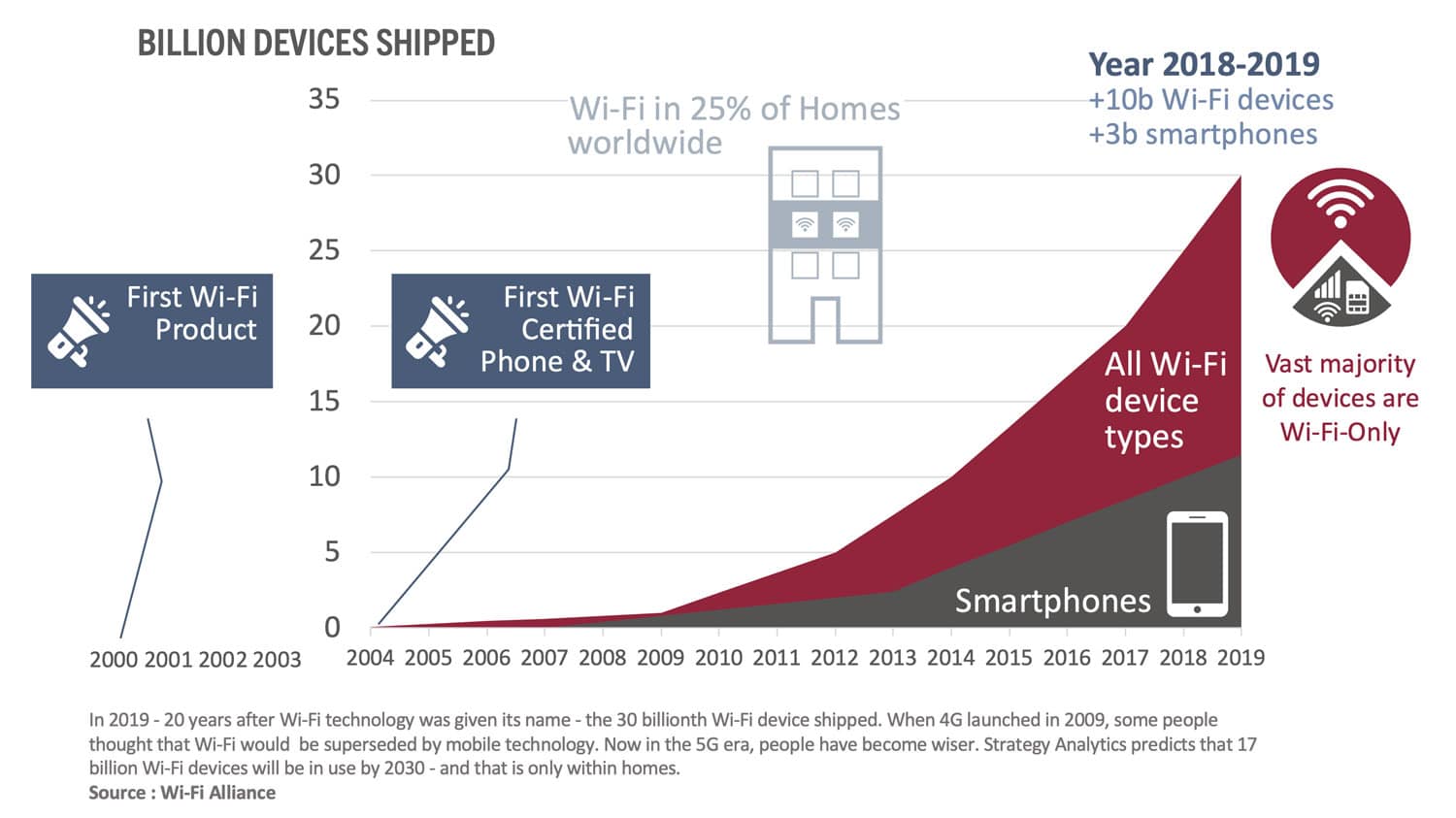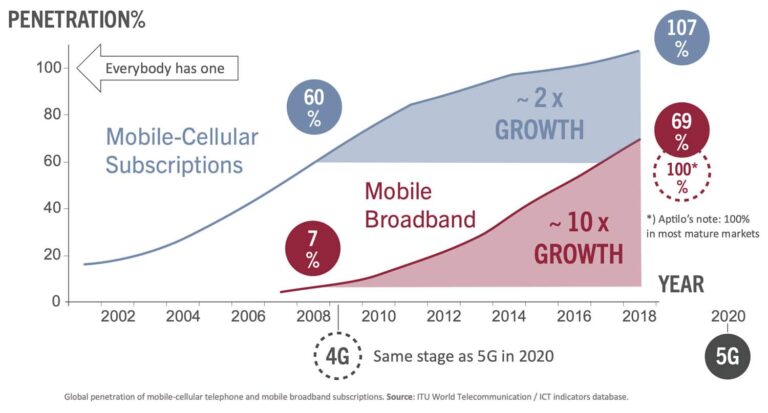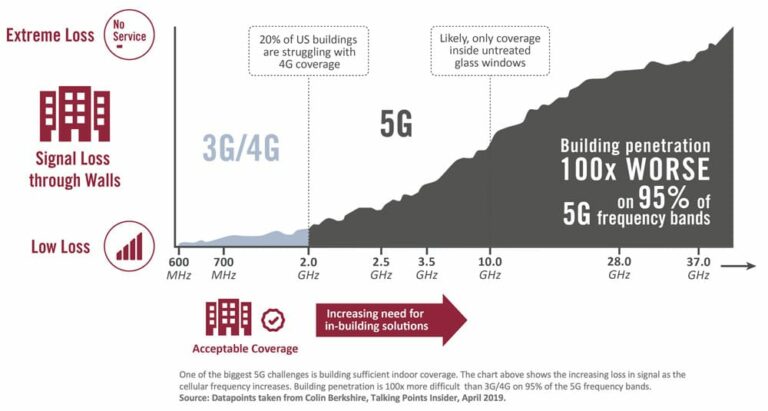White Paper Excerpt
The Challenges of Profitable 5G
Wi-Fi in the 5G era – White Paper
This is an excerpt from our white paper Wi-Fi in the 5G Era – Strategy Guide for Operators. The full white paper is available here if you like what you read. Don’t hesitate to contact us if you have any questions.

The Vast Majority of Devices Are Wi-Fi-Only
The world is firmly on the road to ubiquitous 5G networks and services – but how will service providers pull off investing in new networks while sustaining even modest growth rates and staying profitable under current market conditions? That is one of the mobile telecom industry’s most pressing questions.
While the global 5G industry will be ramping up over the next many years to serve billions of IoT devices, private or public 5G networks for industry, self-driving cars, remote surgery, and more – the real challenge is what to do now to keep both current and future network costs as low as possible.
We believe one important component of profitable services in the 5G era is carrier Wi-Fi in all its forms.
5G Will Not Enjoy Rapid Growth of New Subscribers
When 4G was about at the same level of maturity as 5G is today – which was at around 2008 or so – global mobile broadband penetration stood at about 7%. Today, penetration stands at 69% globally with mature markets fully saturated.
Mobile operators who invested in 4G technologies had a lot to build their return-on-investment (ROI) on. They doubled the number of cellular subscriptions and mobile broadband traffic grew by a factor of ten. Now that everybody already has a subscription, what revenue sources will pay for 5G rollout? New 5G services of course, where IoT is one of the most promising opportunities.
But will it be enough?
Mobile operators have every reason to begin looking for other cost-effective ways to deliver their services.
It also remains to be seen if mobile operators will be able to increase their Average Revenue Per Unit (ARPU) when 5G is deployed at scale. Many will probably see a flattening as opposed to declining ARPU trend as a major victory. At least initially, most consumers may not be in immediate need of higher data rates – and when they are, they are increasingly unlikely to accept paying more for faster services.
Building Penetration 100 Times Worse on 95% of 5G Bands
At the same time, consumers will continue expect unlimited data bundles and high service quality. Uncapped mobile broadband data bundles will fuel the need for operators to actively offload traffic to Wi-Fi. Back in the day when users had to pay for every megabyte of data, operators knew that users were desperately looking for Wi-Fi networks to connect to wherever they went. Once users were no longer connected to the operator’s network, they were considered irrelevant and out of reach. In a world with unlimited cellular subscriptions – or practically unlimited with very high data volume allowances – operators can no longer take this passive approach.
This is the commercial reality facing mobile operators today.
Add to this the technical challenges that mobile operators face with 5G: Because most 5G services operate at relatively high radio frequencies, getting indoor coverage right by beaming in radio signals from the outside is a significant challenge. In the near field of an antenna (within 1-2 m) the so-called coupling loss reduces the signal by 75% (-6 dB) for every doubling of the frequency. In addition to simple path loss the signal will meet obstacles on its way and must finally penetrate the walls of the building itself.
The indoor coverage challenge already exists in the case of 4G. For example: 20% of buildings in the US are struggling with proper indoor coverage. The problem is exacerbated in the case of 5G because of the higher frequency bands involved. Initially 3.1-4.9 GHz is a commonly used frequency range but 5G will also employ the millimetre band above 30 GHz and at such frequencies, line of sight is required for signal reception. Already at the 5G frequency of 10 GHz the only indoor coverage option is to place your receiving device as close to an untreated pane of glass windowpane as possible. Energy-conserving glass used in many new buildings or other forms of treated glass panes will effectively attenuate the signal making indoor coverage more or less impossible.
5G and Wi-Fi 6 Head to the Altar
At Enea Aptilo Networks we never understood why there would ever be a conflict nor any real competition between Wi-Fi and 5G.
On the contrary, the two technologies complement each other perfectly: One is for mobility and wide area coverage (5G), the other for high-performance and high-capacity connectivity indoors (Wi-Fi). And we cannot think of a single reason why operators should not use all the tools at their disposal to maximize profitability.
Read more about this and how operators should make the most of their Wi-Fi assets in our recent blog post Break organisational Silos.




